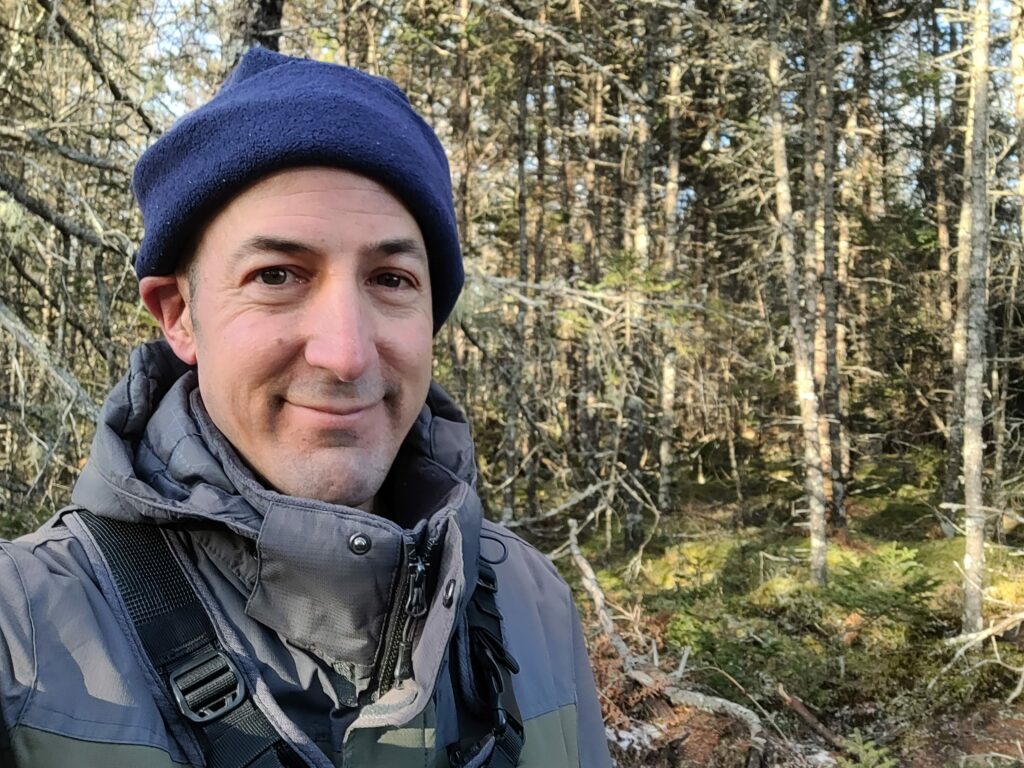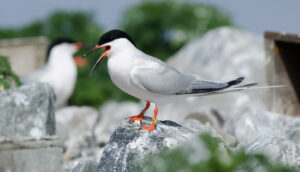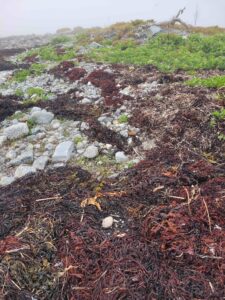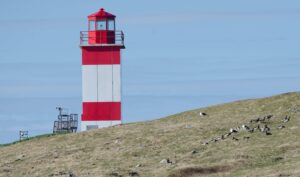Taking Wing with Alix d’Entremont
02 Apr 2024
 Understanding and conserving birds is critical in Nova Scotia—for the benefits birds provide locally and the role they play in global biodiversity. That’s why one of the Nature Trust’s conservation priorities is conserving critical bird habitat.
Understanding and conserving birds is critical in Nova Scotia—for the benefits birds provide locally and the role they play in global biodiversity. That’s why one of the Nature Trust’s conservation priorities is conserving critical bird habitat.
In early 2020, we were delighted to introduce Alix d’Entremont as a Property Guardian and Bird’s Eye View volunteer; as one of our most active birding volunteers and bird experts, learning about what he’s been working on since then gives us an exciting window into the world of bird conservation.
We last profiled you in April 2020. Exactly four years later, what has changed in your life? What have you been working on?

T42 on North Brother Island, banded as a chick on Eastern Egg Rock, Maine, in 2016. Photo credit: Alix d’Entremont. Click on the image to see the related eBird checklist.
There haven’t been any big changes in my life recently. When I’m not at my full-time job with municipal government, I’m most likely birding, especially on islands. A particularly memorable period in the last four years for me was the spring and summer of 2020. The restrictions during Covid lockdowns meant that the usual research team that had been working on data collection and stewardship tasks at the Roseate Tern colony on North Brother Island could not reach the island. My partner, Kathleen MacAulay, and I were fortunate to have had the opportunity to step in and undertake basic colony monitoring work throughout the breeding season. The colony did well with a total of 49 Roseate nests.
What has changed in your volunteer work with the Nature Trust?
Much of my contributions to the Nature Trust now involve recording and sharing observations while undertaking work for other organizations like the Canadian Wildlife Service or local universities. Recently, I’ve been surveying islands in southwest Nova Scotia (including Nature Trust properties) for Brant, Harlequin Ducks, shorebirds, and terns. In 2023, I placed an AudioMoth on a nearshore island that eventually was acquired by the Nature Trust. Recordings from this device suggest that the at-risk Leach’s Storm-Petrels could be nesting there, or at least, nearby.
Have you observed any new or interesting trends over the last four years?
Two species come to mind related to changes that I’ve observed in the last four years.

Photo of the oystercatcher nest taken during a survey of the tern colony. Photo credit: Alix d’Entremont. Click on the image to see the related eBird checklist.
After a decade of seeing American Oystercatchers in the Smithsville and Crow Neck Beach (Nature Trust lands) area in Shelburne County, my crew and I finally confirmed a nest on an island off Smithsville in June 2023. Evidence suggests that this species was once common in the region in the distant past. However, the 2023 nest is the first confirmed contemporary nesting of American Oystercatcher in Nova Scotia away from Cape Sable Island and nearby islands (e.g., Cape Sable).
The 2023 oystercatcher nest in Nova Scotia along with recent nesting of the species in Grand Manan are part of a regional population increase.
Following the observation of a pair of territorial Laughing Gulls on Flat Island in Yarmouth County in 2022, we found a nest with one egg in June 2023. This nest, along with a pair that nested on Sable Island in 2001 and 2003-2009, are the only confirmed breeding records of the species since 1941 when a colony was present on the Bird Islands off Harrigan Cove, Halifax County. Regionally, this gull’s population has been increasing since about the 1960s. Perhaps we will again see this species nesting here regularly as they did in the past.
Now that we have passed the spring equinox, what’s on your birding radar? What does this time of year bring for you?

Brant on Whitehead Island in May 2022. Photo credit: Alix d’Entremont.
Early spring is time for the yearly Nocturnal Owl Survey and Brant survey. Soon after that, the province will come alive with the arrival of migrants. Of course, I get excited when I come upon an uncommon species. The real focus of my activities from May through July will be terns. It is always thrilling to hear the year’s first “chivik” call from a newly arrived Roseate Tern in early May! I plan on undertaking weekly Roseate Tern foraging surveys throughout the breeding season for Université Sainte-Anne and look forward to the tern colony censuses during June.
What advice do you have for readers interested in getting started with birding?
Those that have an interest should join in a Nova Scotia Bird Society field trip or tag along with a local birder on one of their outings. It can be a steep learning curve, so benefiting from the experience from a long-time birder is helpful.
The more people who learn about and form a connection with the natural world, including birds, the better. With appreciation comes an interest in working towards conservation.
